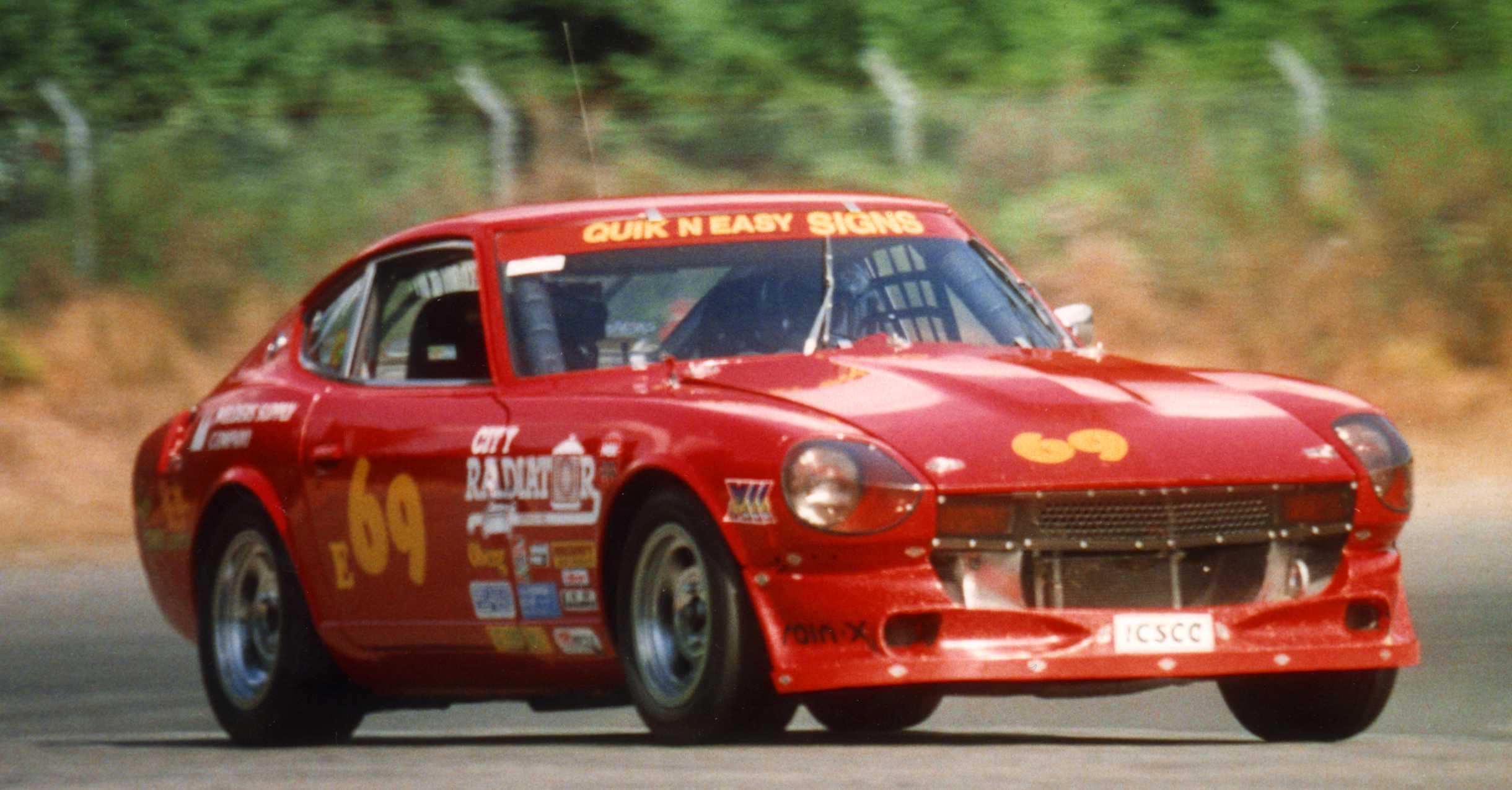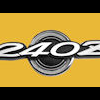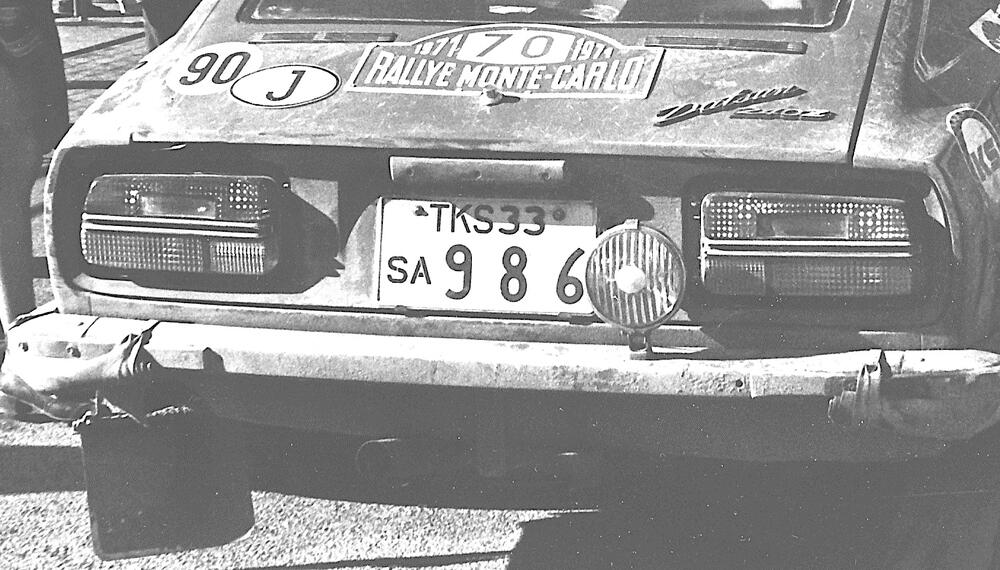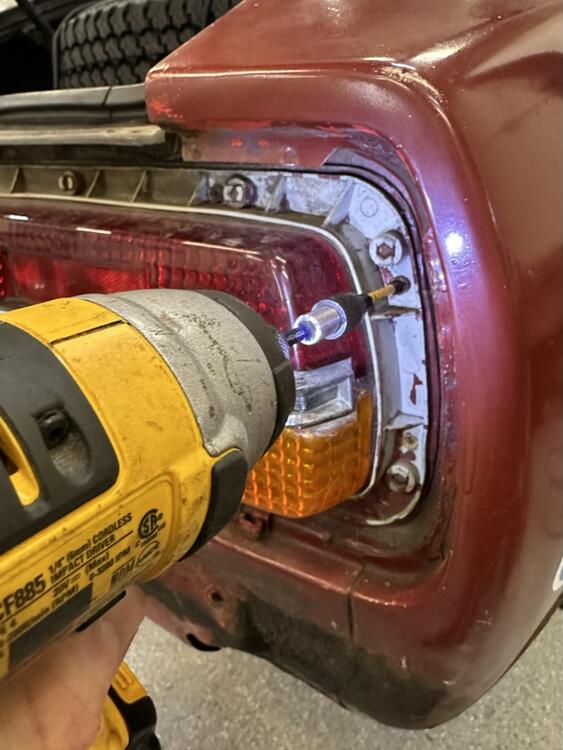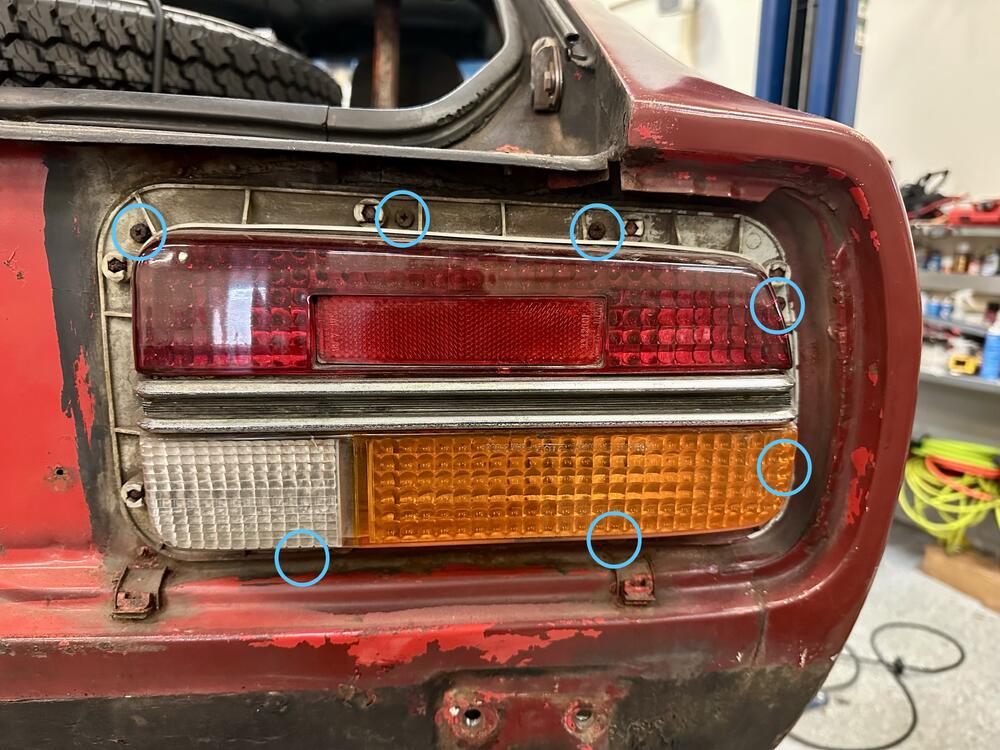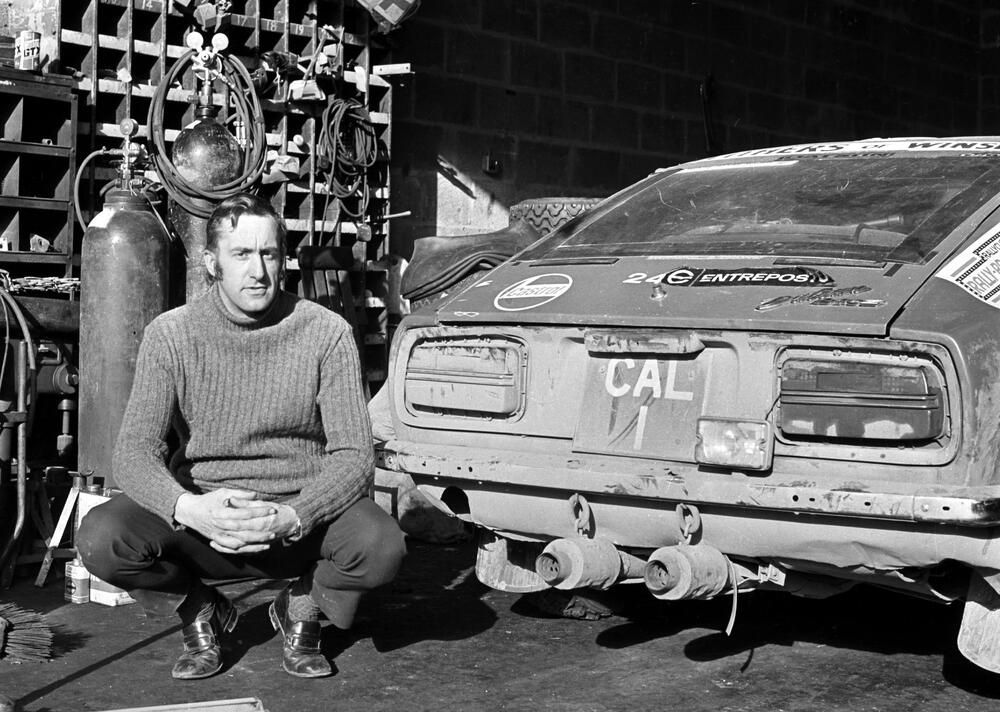Here's a fun little detail seen on the early cars. The rear light pods were affixed from the rear of the car (sometimes using sheet metal screws?), so they could be removed from behind and outside. I imagine there were several reasons for this: surely, to facilitate the changing of a bulb without having to open and unload the trunk. Perhaps also: to provide an easy way to swap out the entire assembly, should it be damaged during the rally.
I'm not entirely confident that the lights were always affixed with screws, as I have not seen them affixed this way on another car. For example, the included picture of an earlier car does not appear to have screws, but it does have the quick-change rear panel installed. From what I can see with my car: they appear to be original to the car, or at least installed in-period. That said, it's possible that the lights were held in place using other means, such as being just loosely glued in place, and could therefore be pulled off by hand, without tools. But this is just a guess.
From what I can tell, all the rally cars campaigned in 1970 and 1971 had this feature. I don't exactly know with what car the practice ceased, but around late 1971, Nissan stopped fitting a rear panel which could accommodate this feature. I assume they also eliminated the "external-change" feature along with it, but perhaps they just eliminated the custom rear panel. Another possibility is that the feature remained, but that Nissan perhaps altered the lenses to be removable from the housing. Again, this is just speculation. If someone is willing to go tug on the rear lenses of Nissan's cars and see what happens, perhaps we can get a few answers!
 Subscriber
Subscriber 4Points2,733Posts
4Points2,733Posts